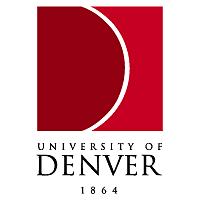The University and The City
 The University of Denver promises, in its vision statement, to be “a great private university dedicated to the public good.” In 2006 a campus conference about the university’s relationship to the city provided an opportunity to explore ways that DU can partner with city government to address significant urban problems. At the time local columnists worried about the loss of large and mid-sized employers in the city center, the growing number of poor students in a public school system characterized by aging infrastructure, and the migration of middle-class families to the suburbs.
The University of Denver promises, in its vision statement, to be “a great private university dedicated to the public good.” In 2006 a campus conference about the university’s relationship to the city provided an opportunity to explore ways that DU can partner with city government to address significant urban problems. At the time local columnists worried about the loss of large and mid-sized employers in the city center, the growing number of poor students in a public school system characterized by aging infrastructure, and the migration of middle-class families to the suburbs.
The conference proceedings didn’t disappoint. Presentations by city officials in the areas of public safety, education, and business development suggested numerous possibilities for student service learning and collaborative, community-engaged research. Civic commitments to historic preservation, sustainability, and social justice were also on display. All of this nicely dovetails with DU’s educational mission.
I listened to the speakers as a Denverite keenly interested in the life and future of the American city. Many of DU’s professional schools, research centers, and institutes are well-positioned to tackle problems around urban education, land use, transportation and environment. Much less tractable is the challenge of integrating new immigrants and other culturally diverse groups into an intercultural whole that has a shared commitment to city-building. Several conference presenters expressed optimism that Denver is up to the task given what they see as our city’s long history of civic determination and cultural inclusiveness. In one of the few moments that elicited spontaneous applause from the audience–given a wider debate percolating in American society at the time–one presenter described immigration to the city as an “asset” rather than a problem.
I wonder, however, whether such claims are actually reflected in practice, some successes in other areas of civic life notwithstanding. Five years later Denver is still experiencing many of the same problems as other American cities: gentrification, middle-class flight to exurbs, and deepening divisions between rich and poor in urban core and suburb alike. One strategy that’s emerged worldwide for revitalizing life in city centers is building for cultural tourism, but this has opened up other debates about the accessibility of revitalized spaces for minority populations. These debates are happening here Denver, inspired by such developments as completion of the Hamilton wing of the Denver Art Museum, proposals to rehabilitate the Civic Center and Union Station areas, and the continuing maturation of Denver’s widely-touted New Urban experiments in sustainable living.
The key question is whether these developments will produce a more culturally-inclusive city or simply reproduce old patterns of exclusion in new forms. Will investments in Denver’s pedestrian plazas and malls, recreation centers, libraries and museums, and its many public parks encourage use by a variety of groups? Will redesigned public spaces enhance democratic interactions on the street and help create a common civic purpose that transcends loyalty to the local professional football team? How might other spaces and cultural institutions be designed and located so as to serve the common good? These and other questions require serious engagement with a variety of traditional liberal arts disciplines—fields much maligned by parents and pundits these days for having little practical relevance—such as anthropology, art, foreign languages, geography, history, human communication, and religious studies.
In recent years DU has nicely burnished its reputation as an institution that serves the public good. In 2006 an Economic Futures Panel evaluated the ability of Colorado’s state and local governments to develop and sustain public investments appropriate to the state’s long-term financial well-being. Strategic Issues Programs in 2007 and 2009 examined the hot-button topics of water use and immigration reform. In 2010 DU opened a new Center for World Languages and Cultures. The DU faculty have just approved a new academic minor in Intercultural Global Studies aimed at better understanding the cultural similarities and differences among diverse groups living in the United States. What if we now imagine the formation of a Colorado Cultural Futures Panel to examine intercultural relationships and sustainability in the context of the myriad challenges facing great—and wannabe great—American cities? It’s a proposal worth considering if we want to cultivate more and better partnerships between the city of Denver and its institutions of higher learning.

Leave a Reply